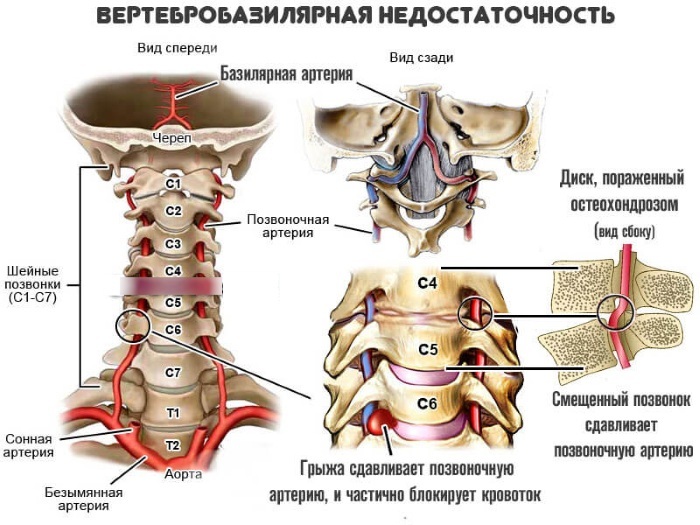Content
- Primary and secondary causes of muscle spasms in the body
- Fingers, calf muscles of the legs
- Arm muscles
- Abdominal muscles
- Thigh muscles
- Whole body cramps
- Night cramps
- Types of muscle cramps, signs
- Clonic muscle spasms
- Tonic muscle spasms
- What can you do at home if you have a muscle spasm?
- How to stretch leg muscles
- Stretching the muscles of the arm
- Stretching the muscles of the neck, back
- Diagnostic methods and differentiation of diagnosis
- MRI
- Check-up (comprehensive examination of the body)
- Computerized electroencephalography
- Computerized topography of the spine
- Duplex scanning
- Ultrasound
- CT scan
- Treating muscle spasms
- Medication for muscle spasm
- Manual therapy
- Folk remedies
- Physiotherapy
- Massotherapy
- Reflexology
- Ozone therapy
- Exercise therapy
- Diet and drinking regimen
- Video about muscle spasm
Muscle spasms that spread throughout the body, or affect its individual parts, are rhythmic and uncontrolled muscle contractions. Twitching of the muscle tissues of the abdomen, upper and lower extremities, back, hip region can continue for several seconds, or lasts for hours. The presence of this symptomatology significantly reduces the quality of human life and requires a comprehensive examination of the body.
Primary and secondary causes of muscle spasms in the body
Muscle spasms that are felt throughout the body can be caused by various factors. There are primary and secondary causes of involuntary skeletal muscle contraction.
Fingers, calf muscles of the legs
The primary causes of muscle spasms of the calf muscles and fingers of the lower extremities are associated with the physiological reactions of the body to the effects of the following factors:
- walking in too tight shoes;
- spending a long time on your feet;
- a sedentary lifestyle, which results in chronic tissue edema in the area of the calf muscles;
- local inflammatory process of the tissues of the toes, provoked by a fungal infection;
- overwork of the muscles of the lower extremities.
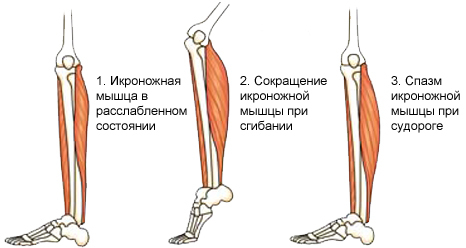
Secondary causes of spasms of the calf muscles and toes are associated with the negative influence of pathological factors, namely:
- damage to the peripheral nerves responsible for the innervation of this area of skeletal muscle;
- the initial stage of multiple sclerosis;
- stagnation of venous blood and lymph in the tissues of the calf muscles;
- complications of diabetes mellitus;
- violation of local blood circulation in the lower legs;
- arthrosis of the joints of the toes;
- varicose veins.
One of the signs of the above diseases is regular or periodic twitching of the calf muscles and fingers of the lower extremities. As the pathology progresses, a proportional exacerbation of painful symptoms occurs.
Arm muscles
The muscle tissue of the arms is least likely to suffer from involuntary contraction or rhythmic twitching.
There are the following primary causes of skeletal muscle spasms in this part of the body:
- hard physical labor associated with daily heavy lifting;
- the consequences of intensive training in the gym, during which exercises were performed for biceps, triceps, forearm;
- alcohol abuse (this primary cause of spasms of the muscles of the hands can provoke the development of secondary pathologies in the form of diseases of the internal organs and the central nervous system);
- chronic stress and psycho-emotional stress;
- prolonged use of drugs.
The danger of the primary causes of hand muscle spasms is that they can cause the development of concomitant diseases of the body.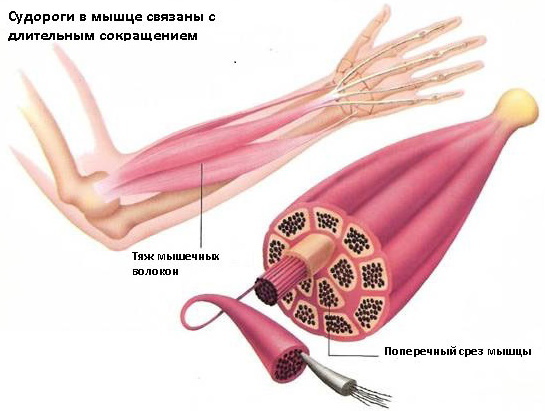
Secondary causes of involuntary muscle contraction of the upper limbs include the following factors:
- Parkinson's disease;
- amyotrophic lateral sclerosis;
- polyneuropathy of the peripheral nerves of the upper extremities;
- negative consequences of craniocerebral trauma and surgical operations on the tissues of the brain;
- hypothyroidism of the thyroid gland;
- progressive dystrophy of the skeletal muscles of the arms.
Exposure to secondary causes that cause spasms of the muscles of the hands leads to negative changes in the structure muscle of the upper extremities, reduces the patient's quality of life, and can also cause disability.
Abdominal muscles
There are the following primary causes of spasmodic contraction of the abdominal muscles:
- morbid obesity;
- drinking plenty of fluids;
- binge eating;
- eating a lot of too spicy, sour, salty foods that irritate the walls of the intestines and stomach;
- performing physical exercises that create an intense load on the muscles of the abdominal cavity;
- the consequences of prolonged vomiting.
The primary causes of abdominal muscle cramps require a person to correct their lifestyle and diet. Secondary factors that cause involuntary contraction of the muscles of a given part of the body are more dangerous, since they can be triggered by the following diseases:
- gastritis;
- peptic ulcer;
- colitis;
- helminthic invasions;
- gastroduodenitis;
- tumor neoplasms in the intestines and stomach walls.
A secondary cause of abdominal cramps can be pregnancy. The most dangerous are the involuntary contractions of the abdominal muscles, which are provoked by acute inflammation of the digestive system, as well as the tissues of the reproductive system in women.
Thigh muscles
Uncontrolled thigh muscle spasms can be caused by the following primary causes:
- prolonged stay in the same position;

- passive lifestyle;
- physical overwork;
- performing a large number of slopes;
- stretching of the muscles located in close proximity to the hip joint.
Secondary causes of involuntary contraction of the skeletal muscles of the thigh include the negative effects of the following factors:
- degenerative changes in the structure of the hip joint;
- the first signs of inflammation of the sciatic nerve;
- benign and oncological neoplasms inside the hip joint;
- atrophy of the skeletal muscles in the pelvic region;
- damage to peripheral nerves;
- obliterating diseases of the blood vessels that nourish the muscles of the hip joint.
It is imperative that the pathological cause causing the muscle spasm in the thigh area is diagnosed as soon as possible. Otherwise, the painful condition of the muscles can spread to the bone and connective tissue of the joint.
Whole body cramps
Convulsive contraction of the muscles of the whole body is associated with the influence of the following primary factors:
- taking medications with diuretic properties;
- profuse sweating in hot and humid climates (similar symptoms can occur after prolonged stay in a stuffy room);
- dehydration of the body;
- violation of water and electrolyte balance;
- the consequences of blood saturation with carbon dioxide;
- a sharp change in temperature (for example, when a person with signs of severe hypothermia of the body finds himself in a too hot room or in a bathroom with hot water);
- overwork of skeletal muscles of the whole body caused by hard physical labor or intense training.
Whole body cramps can also be triggered by the negative effects of the following secondary causes:
- chronic alcoholism;
- brain tumors;
- spine diseases;
- meningitis;
- infections affecting the central and peripheral nervous system;
- trichinosis;
- low-grade fever and fever caused by an inflammatory process in muscle tissues or internal organs.

Muscle spasms throughout the body are a dangerous symptom, which is the basis for an immediate visit to a general practitioner or neurologist for a detailed examination.
Night cramps
There are the following primary causes of seizures at night:
- overwork of the body;
- dinner too late;
- hard and uncomfortable mattress;
- abuse of tobacco products;
- consequences of chronic stress.
The manifestation of night cramps can also be caused by exposure to secondary causes in the form of the following diseases of the body:
- atherosclerosis of the blood vessels;
- tumor neoplasms in the brain;
- degenerative processes in the spine;
- complications of diabetes mellitus;
- metabolic disorders;
- radiculopathy;
- the consequences of poliomyelitis;
- chronic renal failure, accompanied by progressive uremia;
- decreased functional activity of the parathyroid glands;
- heart failure.
Quite often, nocturnal cramps bother people whose bodies are severely iron deficient. In this case, it is necessary to pay increased attention to the external state of the skeletal muscles. Night cramps, accompanied by edema, pain, a change in the color tone of the skin, are signs of severe pathology of the kidneys, liver or cardiovascular system.
Types of muscle cramps, signs
Muscle spasms throughout the body are classified into 2 main types. These are clonic and tonic contractions of skeletal muscles.
Clonic muscle spasms
Clonic muscle spasms are rhythmic muscle tension that a person is unable to control. In this case, the involuntary twitching of muscle tissue is caused by increased activity of the cerebral cortex.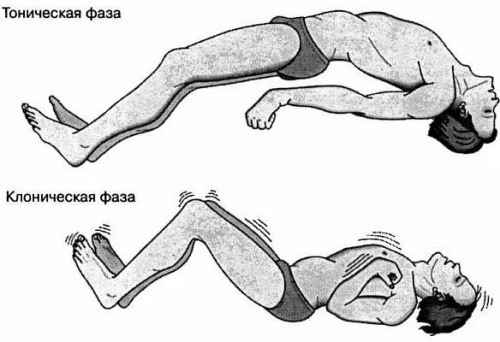
The pathological process can be triggered by mental fatigue, a stressful situation, the consequences of diseases of the central nervous system. Signs of muscle spasms of the clonic type are the simultaneous twitching of various parts of the body or only the tissues of the lower extremities.
Tonic muscle spasms
Muscle spasms of the tonic type differ in the nature of the manifestation of contractile activity of skeletal muscles. In this case, there is a sharp compression of individual muscle groups with their rapid relaxation after 1-3 s. The danger of tonic muscle contractions is that there is a simultaneous spasm of muscles of all types. The risk of developing complications in the work of the cardiovascular system increases.
What can you do at home if you have a muscle spasm?
Muscle spasms throughout the body can be treated at home by doing physical exercises to stretch them.
How to stretch leg muscles
At the time of the occurrence of a spasm of the muscles of the leg, it is necessary to take an upright position, and then tilt forward. Fingers should be stretched towards the floor. In such a situation, the entire skeletal muscles of the lower extremities will be simultaneously stretched. The inclinations are performed until the spasmodic tissues are completely relaxed.
In such a situation, the entire skeletal muscles of the lower extremities will be simultaneously stretched. The inclinations are performed until the spasmodic tissues are completely relaxed.
Stretching the muscles of the arm
In the event of a spasm of the muscles of the arm, it is necessary to straighten the upper limb at the elbow joint, and then raise it up. The outflow of blood from the muscle tissues will lead to their gradual relaxation. The feeling of spasm should disappear within 1-3 minutes.
Stretching the muscles of the neck, back
Preventing involuntary muscle contractions in the neck and back requires daily exercise. To stretch the muscles of the cervical spine, 30 rotational movements of the head should be done around the line of the shoulder girdle. This number of repetitions is performed on the right and left sides. Stretching the muscles of all parts of the back involves the implementation of bends forward, backward and to the sides. In each direction, 25 repetitions should be done.
Diagnostic methods and differentiation of diagnosis
Muscle spasms throughout the body are an alarming symptom that requires a comprehensive examination of the whole body. To determine the causes of pinpoint or extensive contractions of skeletal muscles, several methods of hardware diagnostics are used simultaneously.
MRI
Examination using MRI allows you to scan all departments and life support systems of the body. This diagnostic method determines tumor neoplasms, the pathological state of joints and muscle tissues.
Check-up (comprehensive examination of the body)
Comprehensive examination includes performing ultrasound, CT and MRI diagnostics of the whole body. Also, the patient donates venous, capillary blood and urine for clinical and biochemical analyzes for indicators of the norm of these biological fluids. The human body is examined by a neuropathologist, endocrinologist, surgeon, traumatologist, cardiologist. All actions of doctors are aimed at detecting abnormalities in the patient's health that can cause muscle spasms.
Computerized electroencephalography
Computed electroencephalography is necessary to determine the functional state of the cerebral cortex. 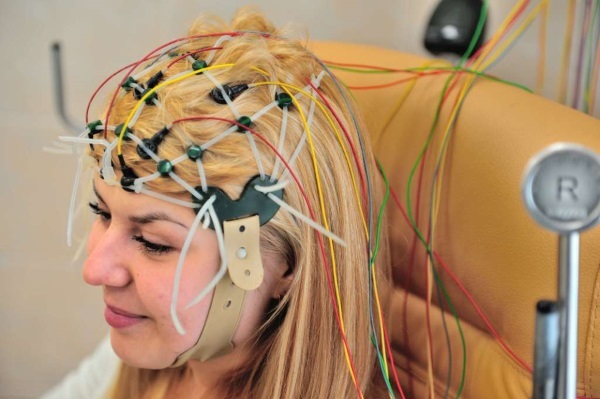 This research method allows you to determine the causes of muscle spasms that are caused by a disease of the central nervous system.
This research method allows you to determine the causes of muscle spasms that are caused by a disease of the central nervous system.
Computerized topography of the spine
Spine CT is an informative diagnostic method, which is prescribed if there is a suspicion of a pathological condition of this part of the musculoskeletal system. During the examination, doctors can detect intervertebral hernias, tumor neoplasms, and foci of chronic inflammation.
Duplex scanning
Duplex scanning is done to diagnose arterial disease. The painful condition of the great blood vessels in the lower extremities can cause uncontrolled muscle tissue spasms.
Ultrasound
Ultrasound diagnostics is aimed at detecting diseases of the internal organs. Particular attention is paid to the tissues located inside the abdominal cavity. This examination method is most effective in combination with MRI diagnostics.
CT scan
Whole body CT is an informative examination method, during which doctors receive comprehensive information about the functional state of the patient's entire body. 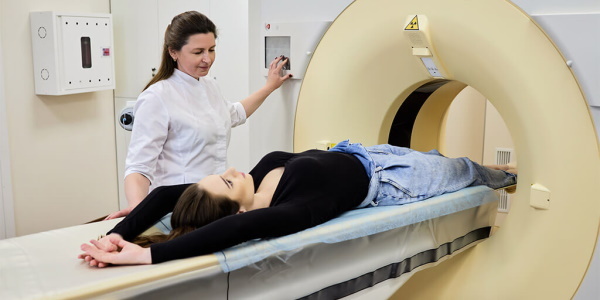 Based on the results of the diagnosis, a medical report is drawn up, and a copy of it is stored on the hard disk of the PC in electronic format.
Based on the results of the diagnosis, a medical report is drawn up, and a copy of it is stored on the hard disk of the PC in electronic format.
Treating muscle spasms
Methods of therapy for uncontrolled contractions of skeletal muscles are selected taking into account the reasons that provoked their occurrence.
Medication for muscle spasm
For the treatment of muscle spasm, the following antispasmodic drugs can be used:
- Drotaverine hydrochloride;
- Papaverine;
- Benziklan;
- Hymecromon;
- Galidor.
The above medicines are myotropic antispasmodics. Spasm relief is provided by relaxing the muscles. The dosage and timing of treatment with these drugs are determined by the doctor.
Manual therapy
The use of manual therapy methods is justified if the cause of muscle spasm is associated with functional disorders of individual elements of the musculoskeletal system. The chiropractor adjusts the displaced vertebrae, eliminates dislocation of the joints of the upper and lower extremities.
Folk remedies
One of the most effective ways to eliminate muscle contractions is to apply a cold source to the spasmodic area of the body. To do this, you need to take a handful of crushed ice, wrap it in a plastic bag, and then for 2-3 minutes. apply to the tissues of the muscles, which has signs of hypertonicity.
Physiotherapy
As physiotherapeutic methods for treating muscle spasms, the following types of therapeutic procedures are carried out:
- mineral baths;
- smearing with medicinal mud;
- stretching the spine;
- cold and hot shower;

- stimulation of peripheral nerves with weak impulses of electric current.
The type of physiotherapy procedure is selected by the doctor based on the results of the patient's diagnostic examination.
Massotherapy
Massage therapy should be performed by a professional massage therapist with medical training or a chiropractor. The principle of this method of treatment is to weaken the hypertonicity of the skeletal muscles by slowly massaging it with fingers and mechanical massagers. The technique of therapeutic massage is selected taking into account the type of muscle and the area of the spasmodic tissue area.
Reflexology
Muscle spasms can be treated with reflexology. The principle of the procedure is that sterile needles are inserted into the biologically active points of the patient's body, which are responsible for the contraction of skeletal muscles. During the week, 2-3 therapeutic sessions are carried out, which provide relaxation of the muscle tissues of the body.
Ozone therapy
Removal of muscle spasms using ozone therapy involves the introduction of ozone gas into the patient's subcutaneous tissue in the area of hypertonicity of the skeletal muscles. 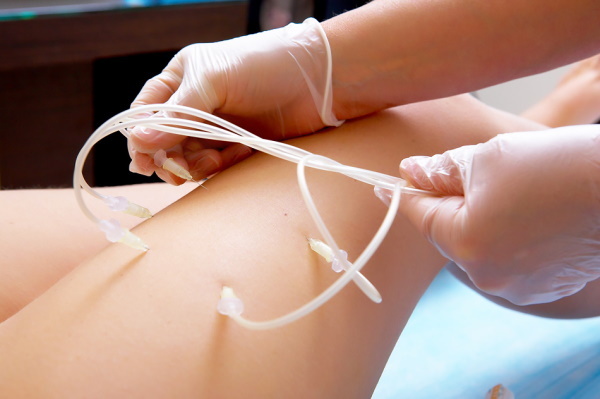 Depending on the extent of the involuntary contraction of muscle tissue, the patient may be given intravenous droppers with a saline solution that has passed the ozonation stage.
Depending on the extent of the involuntary contraction of muscle tissue, the patient may be given intravenous droppers with a saline solution that has passed the ozonation stage.
Exercise therapy
Exercises of physiotherapy exercises are selected taking into account that the main focus of the therapeutic load is created on muscle tissues in a state of hypertonicity.
In the presence of muscle spasm of the lower extremities, the patient is shown daily squats, lifting the body on the toes of the feet. In case of involuntary contraction of the back muscles, it is recommended to practice hanging on a horizontal bar. In this situation, stretching of the muscles of all parts of the spine will be ensured. Muscle spasm of the upper extremities requires performing therapeutic exercises with a hand expander.
Diet and drinking regimen
In the summer, you need to drink 2-3 liters of ordinary water daily without gases. This will eliminate the risk of muscle cramps caused by dehydration. The table below lists the basic foods that will minimize the development of uncontrolled skeletal muscle contractions. It also lists foods and drinks that contribute to muscle spasm in various parts of the body.
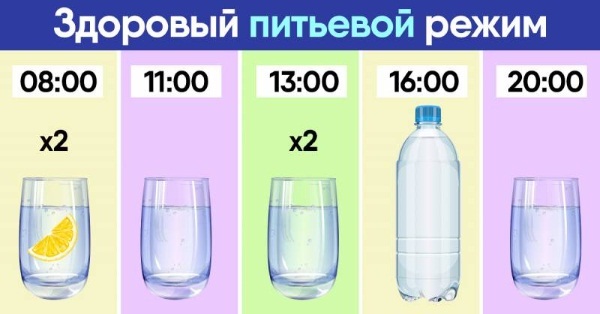
| Allowed Products | Prohibited food and drinks |
|
|
The organization of proper nutrition should be combined with the provision of the muscular system with moderate physical activity. Overwork of the body, as well as irritation of the nervous system by stressful situations, should not be allowed.
Spasms of muscle tissues throughout the body are an unpleasant symptom, the occurrence of which can be associated with the negative effects of primary and secondary factors. In the first case, uncontrolled muscle contraction occurs due to a physiological reaction body for physical overwork, heavy sports loads, abuse of harmful habits.
Pathological causes of muscle spasm are associated with the development of concomitant diseases of the body. Uncontrolled contraction of the muscles in all parts of the body can be caused by brain tumors, spinal injuries, complications of diabetes mellitus and hyperthyroidism of the thyroid gland. Getting rid of spasms requires a preliminary comprehensive diagnosis of the body.
Video about muscle spasm
What is muscle spasm:

